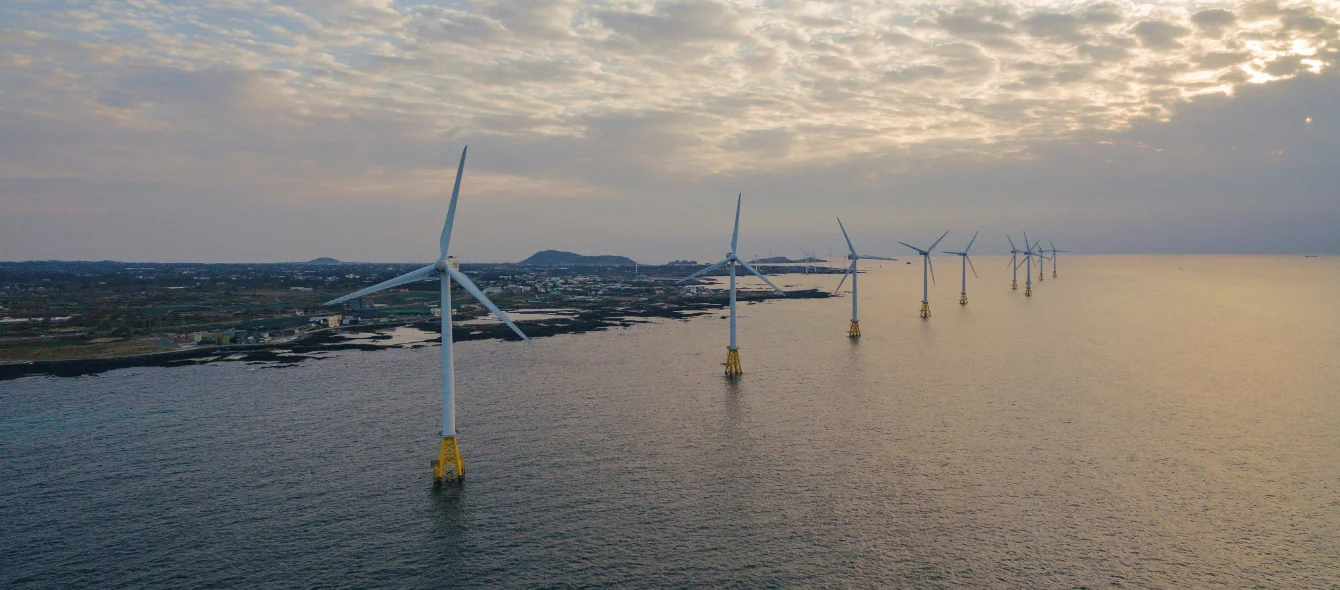As one of the first countries in Asia to adopt a net zero by 2050 target, South Korea is steadily adopting more ambitious climate policies.
The latest move was to revise its Renewable Portfolio Standard (RPS) which applies to power producers with more than 500 MW capacity. Under the RPS, they must now source 12.5% of their power from renewable sources this year, rising to 25% by 2026.
The increase follows new commitments made by the country at the COP26 meeting in Glasgow, Scotland, last November, when Seoul pledged to reduce its greenhouse gas emissions by 40% by 2030 from 2018 levels and joined the Global Methane Pledge to reduce methane emissions by 30% over the same time period from 2020 levels.
Major challenges
South Korea is heavily dependent on imported coal and liquified natural gas (LNG), owing to a near total lack of domestic fossil fuel resources. In 2020, LNG accounted for 17.4% of power generation, coal 36.3%, nuclear 27.9%, with renewables making up only 6.4%.
The economy is also very dependent on heavy industry. The country is the world’s largest ship builder and a major producer of semi-conductors. In 2020, South Korea built 49.6 million gross tons of shipping, more even than China. As a result, industry accounts for 62% of final energy use in South Korea, a very high proportion, according to the Korean Energy Economics Institute.
As the country has also embarked on a gradual phase out of nuclear power, the power sector challenge is immense – greening 81.6% of 2020 power generation by 2050, while at the same time finding low carbon solutions for the country’s industrial economic base.
Boosting offshore wind and solar
South Korea needs to install huge amounts of renewable generating capacity to provide the bulk electricity required for power sector and industrial decarbonisation.
Renewable energy development offers numerous advantages; new industrial opportunities for the country’s heavy industries, for example in offshore wind, reduced import dependency and an improved balance of payments from producing clean power domestically rather than importing fossil fuels.
The country is already off to a racing start in the solar sector. In 2020, solar capacity leapt by 4 GW to just over 14.5 GW, near half of the 30.8 GW target for 2030. However, the country’s solar expansion is expected to be limited by a lack of suitable large sites, which has already seen a recourse to innovation solutions such as floating solar installations.
Otherwise, the construction of renewables has been slow. South Korea had 1,636 MW of wind capacity at the end of 2020, all bar 136 MW of which was onshore.
The country has large onshore wind potential, but development has run into problems with complex permitting, local opposition and growing grid connection issues. As a result, while onshore wind capacity will grow, Seoul is turning to offshore wind as the big game changer, announcing some of the most ambitious projects globally to date.
If realised, these mega-projects would exceed the 2030 offshore wind target of 12 GW, which is the main component of a 16.5 GW goal for wind power overall.
Mega-projects launched
In February last year, plans were unveiled for the 8.2 GW Shinan offshore wind project off the country’s southwest coast. The project is expected to cost some KRW48 trillion ($40.3 billion) and supply power to the capital Seoul and the city of Incheon. It will be developed in two phases, starting in 2023 and 2026 respectively.
The government is aiming for major domestic industrial participation, building factories at Yeongam and Sinan. South Korean companies are to provide KRW47.6 trillion backed by KRW0.9 trillion in public funding as part of President Moon Jae-in’s Green New Deal aimed both at decarbonisation and post-pandemic recovery.
To put this single project in perspective, 8.2 GW of capacity would boost South Korea into the top ranks of offshore wind development, where the UK is currently the largest with just over 10 GW of capacity.
The announcement of Shinan in May was followed by the unveiling of a second mega-project, a 6 GW floating wind complex to be developed off the coast of Ulsan city. This would be by far the world’s largest floating offshore wind project and, again, will attract a mix of public and private funding, including from major international offshore wind developers. The project is expected to cost KRW36 trillion. These two projects will be coupled with the also substantial 4.6 GW Southeast Region Project.
South Korea: new generation capacity, 2018-2030
in GW, source: Korea Institute of Energy Research, May 2021Offshore acceleration
With two pieces of legislation in 2019 – an enhancement plan for the competitiveness of renewable energy and the third basic energy plan – the government is focussed on developing domestic expertise in core parts of the offshore wind supply chain, such as blades and generators. KRW28.5 billion was committed to large-scale turbines from 2018-2022 and floating wind R&D will receive KRW38 billion between 2020-2024.
However, South Korea is not going it alone and is welcoming foreign offshore wind developers into the sector. A number of agreements have been signed, not least a deal in November between RWE Renewables and Ulsan Metropolitan City to cooperate on the development of floating offshore wind projects with capacity of up to 1.5 GW.
With a project pipeline closing in on 20 GW and just 136 MW installed, South Korea is calling for all hands on deck to meet its renewable energy targets as it start to emerge as one of Asia’s largest offshore wind markets.
